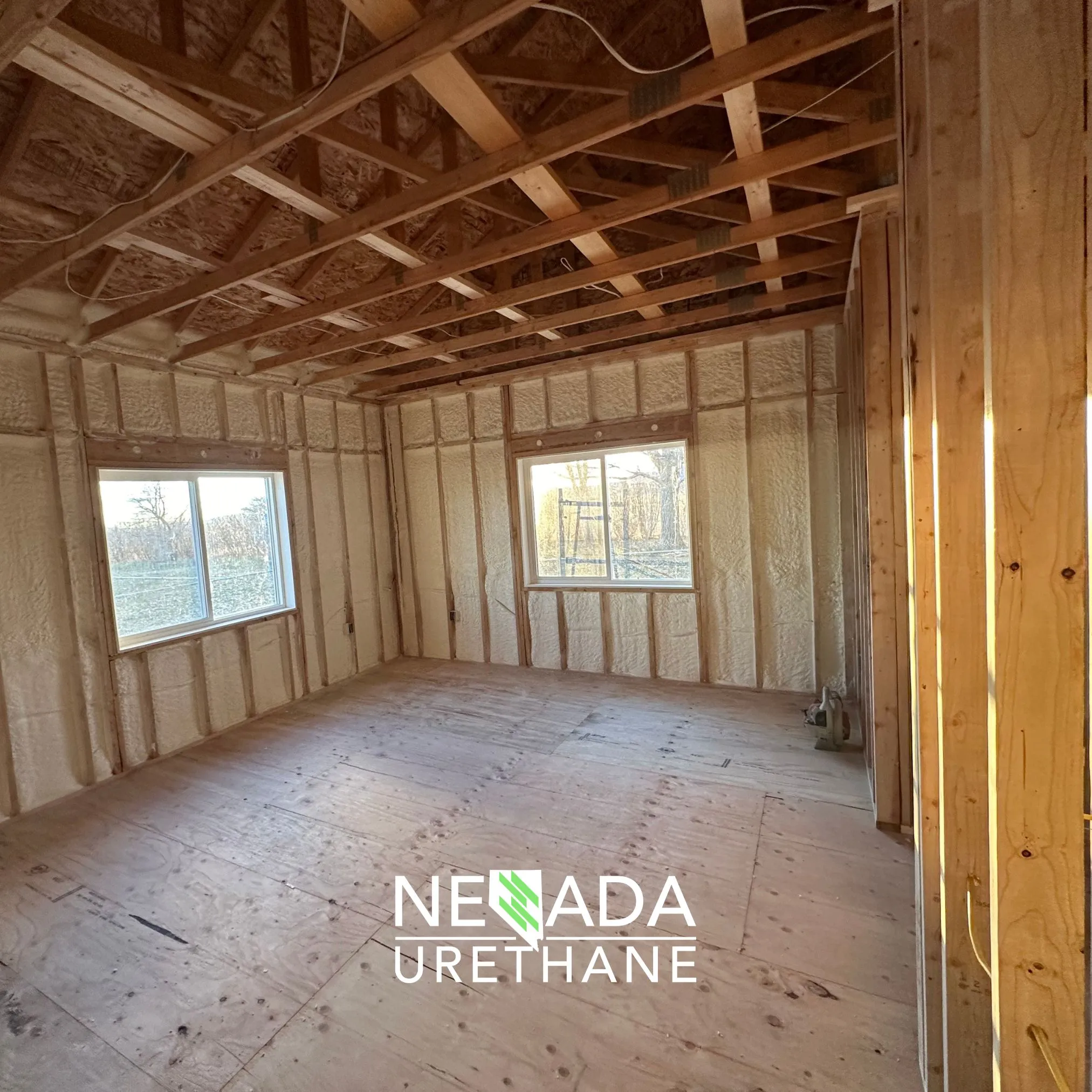
Spray foam used in residential insulation requires strict safety controls during installation. The process involves chemical reactions that release vapors, expand rapidly, and bond to surfaces. Improper handling can cause respiratory irritation, skin contact injuries, and poor insulation performance. The primary safety measures include controlled ventilation, protective gear, material handling protocols, and application technique.
Spray foam systems contain isocyanates and polyols that must be mixed accurately to cure correctly. Without proper safety steps, occupants, installers, and property integrity are at risk. This article explains essential safeguards based on field experience, technical standards, and compliance requirements.
Nevada Urethane applies insulation across residential properties in desert, alpine, and semi-arid climates where temperature control and moisture resistance are critical. The following breakdown details specific safety actions and why they matter.
Installers must use head-to-toe protection during all spray operations. This prevents direct exposure to vapors and skin contact with uncured chemicals.
| Safety Equipment | Purpose | Use Conditions |
|---|---|---|
| Full-face respirator | Protects lungs and eyes from isocyanate vapors | Required during application and mixing |
| Chemical-resistant gloves | Prevents hand contact with foam or catalyst agents | Always worn while handling any component |
| Disposable coveralls | Shields skin and clothing from splashes | Changed after each job or heavy exposure |
| Boot covers | Keeps foam off floors and boots | Used throughout application zone |
Bonus Tip: Use two sets of gloves—one for handling tanks, another for spraying—to prevent cross-contamination.
Effective ventilation is critical for displacing off-gassed vapors during and after foam application. Without active air exchange, airborne contaminants may linger.
| Ventilation Method | Use Case | Duration | Equipment |
|---|---|---|---|
| Negative air machines | Small enclosed areas like attics | During and 24 hours after install | Ducted HEPA filter units |
| Cross-ventilation | Large open structures | During spraying only | Fans at opposing ends |
| Fresh air supply masks | Backup protection for installers | During spraying and re-entry | Airline respirator systems |
Bonus Tip: Schedule foam application during low-wind outdoor conditions to avoid drawing vapors back into occupied areas.
Spray foam cures through exothermic chemical reactions. The off-gassing period varies based on foam type and volume. Occupants must be cleared from the home before installation begins and remain out until re-entry is safe.
| Foam Type | Typical Re-entry Wait Time | Re-entry Test Method |
|---|---|---|
| Open-cell | 12-24 hours | VOC meter or odor absence |
| Closed-cell | 24-72 hours | VOC meter or third-party report |
OSHA and EPA recommend air sampling when re-entry must occur under 24 hours. Consult MSDS documentation from the foam product manufacturer.

Correct handling of the A (isocyanate) and B (resin) components is essential. Improper ratios or poor agitation compromise insulation performance and raise health risks.
| Procedure | Risk of Non-Compliance | Recommended Practice |
|---|---|---|
| Incorrect ratio | Foam shrinkage, toxic fume release | Use automatic metering systems |
| Cold chemical temperature | Poor mixing, spray defects | Store at 70-85°F before use |
| Old batch use | Uneven curing, high off-gassing | Check expiration dates on-site |
Bonus Tip: Keep material drums off cold concrete slabs. Use heated drum blankets or pre-warmed storage spaces.
| Parameter | Range or Standard | Source |
|---|---|---|
| Recommended Application Temp | 60°F to 85°F surface & ambient | Manufacturer specs (Demilec, BASF) |
| Isocyanate Exposure Limit (TWA) | 0.005 ppm (8-hour) | OSHA PEL & NIOSH REL |
| Curing Time Before Trimming | 30-60 minutes (typical) | Product data sheets |
| Fire Barrier Coating Requirement | Yes (IRC 316.6) for habitable areas | International Residential Code (IRC) |
No. All occupants and pets must vacate before work begins.
Cured foam is inert. Risks exist only during application and early curing.
Yes, in any occupied space not sealed off. Check local code.
Yes, but surface and material temperatures must be managed.
For safe, compliant spray foam installation, work with insulation professionals who apply tested protocols across diverse building types. Nevada Urethane has field-tested processes to protect both properties and occupants.
Phone: (775) 397-2820
Email: [email protected]
Properly applied foam can last over 30 years without degradation.
Yes, if cavity space exists and access points can be created.
Open-cell foam offers sound dampening. Closed-cell is denser but less effective for noise.
Over-application can cause bulging, cracking, or structural pressure on framing.
Cutting or scraping is required. Removal is labor-intensive and should be avoided by correct initial install.